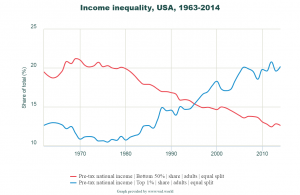 Most countries score an F on our LGBT human rights report card is a recent article in The Conversation.
Most countries score an F on our LGBT human rights report card is a recent article in The Conversation.
Our research gives most countries in the world a failing grade in LGBTQ rights, reflecting widespread persecution of sexual minorities. Only one country in 10 actively protects the human rights of sexual minorities.
The article includes three charts with data that can be used in a statistics or QL based course. There is also a link to the related paper, Human Rights and the Global Barometer of Gay Rights (GBGR): A Multi-Year Analysis, that describes the methodology used in the rankings.



 The Economic Policy Institute
The Economic Policy Institute